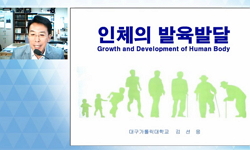A 4-week feeding experiment was conducted with juvenile white shrimp Litopenaeus vannamei to compare the growth of shrimp fed different protein sources: fish meal (FM) and soybean meal (SM). By the end of the experiment, the shrimp grew to 4.50±0.82 ...
http://chineseinput.net/에서 pinyin(병음)방식으로 중국어를 변환할 수 있습니다.
변환된 중국어를 복사하여 사용하시면 됩니다.
- 中文 을 입력하시려면 zhongwen을 입력하시고 space를누르시면됩니다.
- 北京 을 입력하시려면 beijing을 입력하시고 space를 누르시면 됩니다.

사료 단백질원으로 어분과 대두박 첨가에 따른 어린 흰다리새우 (Litopenaeus vannamei)의 성장 및 체성분 변화 = Changes in the Growth and Body Composition of Juvenile White Shrimp Litopenaeus vannamei Fed diets Containing Fish Meal and Soybean Meal as Protein Sources
한글로보기https://www.riss.kr/link?id=A103871684
- 저자
- 발행기관
- 학술지명
- 권호사항
-
발행연도
2012
-
작성언어
Korean
- 주제어
-
등재정보
KCI등재
-
자료형태
학술저널
- 발행기관 URL
-
수록면
659-665(7쪽)
-
KCI 피인용횟수
0
- DOI식별코드
- 제공처
-
0
상세조회 -
0
다운로드
부가정보
다국어 초록 (Multilingual Abstract)
A 4-week feeding experiment was conducted with juvenile white shrimp Litopenaeus vannamei to compare the growth of shrimp fed different protein sources: fish meal (FM) and soybean meal (SM). By the end of the experiment, the shrimp grew to 4.50±0.82 g (FM) and 4.73±0.95 g (SM). The food and protein conversion rates were significant (P<0.05), while other factors did not differ significantly. The survival rate of shrimp fed FM and SM was 96.44±2.04% and 97.33±1.89%, respectively. The proximate compositions of the entire body and edible part of the shrimp were similar between FM and SM, except for crude protein. The total amino acid levels were slightly lower in SM than FM, but the difference was not significant. During the experiment, the total ammonia,nitrate, and nitrite concentrations increased continuously in both groups and were slightly higher in SM than FM. In conclusion, soybean meal as a substitute for fish meal results in satisfactory growth and survival of white shrimp.
참고문헌 (Reference)
1 Ray AJ, "Suspended solids removal to improve shrimp, Litopenaeus vannamei production and an evaluation of a plant-based feed in minimal-exchange, super-intensive culture systems" 299 : 89-98, 2010
2 Piedad-Pascual F, "Supplemental feeding of Penaeus monodon juveniles with diets containing various levels of defatted soybean meal" 89 : 183-191, 1990
3 Alam MS, "Supplemental effects of coated methionine and/or lysine to soy protein isolate diet for juvenile kuruma shrimp, Marsupenaeus japonicus" 248 : 13-19, 2005
4 MLTM (Ministry of Land, Transport and Maritime Affairs), "Standard methods for marine environmental analysis"
5 Akiyama DM, "Soybean meal utilization by marine shrimp" American Oil Chemists Society 252-265, 1989
6 Davis DA, "Practical diets for Litopenaeus vannamei (Boone, 1931): working towards organics and/or all plant production diets" 2004
7 Tidwell JH, "Partial and total replacement of fish meal with soybean meal and distillers’ by-products in diets for pond culture of the freshwater prawn, Macrobrachium rosenbergii" 118 : 119-130, 1993
8 Wyban JA, "Paddle wheel effects on shrimp growth, production and crop value in commercial earthen ponds" 20 : 18-23, 1989
9 AOAC, "Official methods of analysis" Association of Official Analytical Chemists, Inc 1995
10 Jackson C, "Nitrogen budget and effluent nitrogen components at an intensive shrimp farm" 218 : 397-411, 2003
1 Ray AJ, "Suspended solids removal to improve shrimp, Litopenaeus vannamei production and an evaluation of a plant-based feed in minimal-exchange, super-intensive culture systems" 299 : 89-98, 2010
2 Piedad-Pascual F, "Supplemental feeding of Penaeus monodon juveniles with diets containing various levels of defatted soybean meal" 89 : 183-191, 1990
3 Alam MS, "Supplemental effects of coated methionine and/or lysine to soy protein isolate diet for juvenile kuruma shrimp, Marsupenaeus japonicus" 248 : 13-19, 2005
4 MLTM (Ministry of Land, Transport and Maritime Affairs), "Standard methods for marine environmental analysis"
5 Akiyama DM, "Soybean meal utilization by marine shrimp" American Oil Chemists Society 252-265, 1989
6 Davis DA, "Practical diets for Litopenaeus vannamei (Boone, 1931): working towards organics and/or all plant production diets" 2004
7 Tidwell JH, "Partial and total replacement of fish meal with soybean meal and distillers’ by-products in diets for pond culture of the freshwater prawn, Macrobrachium rosenbergii" 118 : 119-130, 1993
8 Wyban JA, "Paddle wheel effects on shrimp growth, production and crop value in commercial earthen ponds" 20 : 18-23, 1989
9 AOAC, "Official methods of analysis" Association of Official Analytical Chemists, Inc 1995
10 Jackson C, "Nitrogen budget and effluent nitrogen components at an intensive shrimp farm" 218 : 397-411, 2003
11 Millamena OM, "Methionine requirement of juvenile tiger shrimp, Penaeus monodon fabricius" 143 : 403-410, 1996
12 "KOSTAT (Korean Statistical Information Service)"
13 Sudaryono A, "Investigation of alternative protein sources in practical diets" 134 : 313-323, 1995
14 Xia S, "Influence of dietary protein levels on growth, digestibility, digestive enzyme activity and stress tolerance in white-leg shrimp, Litopenaeus vannamei (Boone, 1931), reared in high-density tank trials" 41 : 1845-1854, 2010
15 Samocha TM, "Heterotrophic intensification of pond shrimp production" 22-25, 2004
16 Li E, "Growth body composition respiration and ambient ammonia nitrogen tolerance of the juvenile white shrimp, Litopenaeus vannamei at different salinities" 265 : 385-390, 2007
17 Cavalli RO, "Growth and feed utilization of the shrimp, Farfantepenaeus paulensis fed diets containing different marine protein sources" 34 : 891-896, 2004
18 Tacon AGJ, "Feed ingredients, In Crustacean nutrition, advances in world aquaculture, vol. 6" World Maric Soc, Baton Rouge 411-472, 1997
19 Holthuis LB, "FAO species catalogue, vol. 1. Shrimps and prawns of the world" Food and aquaculture organization of the United Nations 1980
20 "FAO (Food and Agriculture Organization)"
21 Lim C, "Evaluation of soybean meal as a replacement for marine animal protein in diets for shrimp, Litopenaeus vannamei" 87 : 53-63, 1990
22 Persson G., "Eutrophication resulting from salmonid fish culture in fresh and salt waters. Scandinavian experience" Nutritional strategies and aquaculture waste 1991
23 Deng J, "Effects of replacing fish meal with soy protein concentrateon feed intake and growth of juvenile Japaneseflounder, Paralichthys olivaceus" 258 : 503-513, 2006
24 Amaya E, "Alternative diets for the Pacific white shrimp, Litopenaeus vannamei" 262 : 419-425, 2007
25 Lin YC, "Acute toxicity of nitrite on Litopenaeus vannamei (Boone) juveniles at different salinity levels" 224 : 193-201, 2003
26 Maguire GB, "A study of the optimum stocking density and feed rate for school prawns, Metapenaeus macleayi (Haswell) in some Australian brackish water farming ponds" 30 : 285-297, 1983
27 Cho CY, "A review of diet formulation strategies and feeding systems to reduce excretory and feed wastes in aquaculture" 32 : 349-360, 2001
동일학술지(권/호) 다른 논문
-
백합(Meretrix meretrix) 식해에서 분리한 Pediococcus pentosaceus SH-10에 의한 병원성 세균의 억제 기작
- 한국수산과학회
- 신동민
- 2012
- KCI등재
-
- 한국수산과학회
- 김강웅
- 2012
- KCI등재
-
통영연안에 서식하는 보라성게(Anthocidaris crassispina)와 말똥성게 (Hemicentrotus pulcherrimus)의 위 내용물과 서식지 해조군락
- 한국수산과학회
- 김남길
- 2012
- KCI등재
-
Vibrio alginolyticus에 대한 특이 bacteriophage의 생물학적 특성
- 한국수산과학회
- 허용주
- 2012
- KCI등재
분석정보
인용정보 인용지수 설명보기
학술지 이력
| 연월일 | 이력구분 | 이력상세 | 등재구분 |
|---|---|---|---|
| 2026 | 평가예정 | 재인증평가 신청대상 (재인증) | |
| 2020-01-01 | 평가 | 등재학술지 유지 (재인증) |  |
| 2017-01-01 | 평가 | 등재학술지 유지 (계속평가) |  |
| 2014-08-06 | 학술지명변경 | 외국어명 : Korean Journal of Fisheries and Aquatic Sciences -> Korean Journal of Fisheries and Aquatic Sciences |  |
| 2013-01-01 | 평가 | 등재학술지 유지 (계속평가) |  |
| 2010-01-01 | 평가 | 등재학술지 유지 (등재유지) |  |
| 2009-09-04 | 학회명변경 | 한글명 : 한국수산학회 -> 한국수산과학회영문명 : The Korean Fisheries Society -> The Korean Society of Fisheries and Aquatic Science |  |
| 2009-07-03 | 학술지명변경 | 한글명 : 한국수산학회지 -> 한국수산과학회지외국어명 : Journal of The Korean Fisheries Society -> Korean Journal of Fisheries and Aquatic Sciences |  |
| 2008-01-01 | 평가 | 등재학술지 유지 (등재유지) |  |
| 2006-01-01 | 평가 | 등재학술지 유지 (등재유지) |  |
| 2003-01-01 | 평가 | 등재학술지 선정 (등재후보2차) |  |
| 2002-01-01 | 평가 | 등재후보 1차 PASS (등재후보1차) |  |
| 1999-07-01 | 평가 | 등재후보학술지 선정 (신규평가) |  |
학술지 인용정보
| 기준연도 | WOS-KCI 통합IF(2년) | KCIF(2년) | KCIF(3년) |
|---|---|---|---|
| 2016 | 0.47 | 0.47 | 0.43 |
| KCIF(4년) | KCIF(5년) | 중심성지수(3년) | 즉시성지수 |
| 0.43 | 0.43 | 0.59 | 0.17 |




 ScienceON
ScienceON






